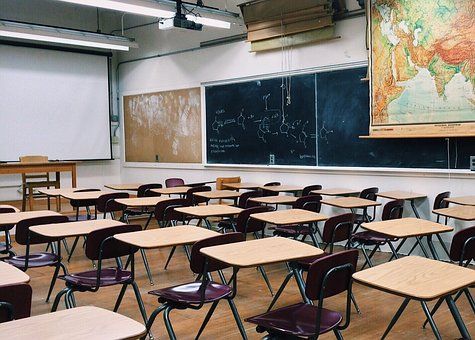Should Students Go Back?
Assessing the benefits and consequences of students returning to school

Image courtesy of Pixabay.com
On March 13, 2020, the decision was made to close FCPS schools indefinitely. It’s now been over 200 days since in-person learning was halted, and as the new school year is igniting to full force, students and teachers are still unaware of the county’s plans to finish out the year. But one thing is certain – the decision that superintendent Dr. Scott Brabrand makes can firmly benefit or harshly constrain each student and their ability to learn and succeed.
There’s no doubt that the underlying reason for students switching to online learning is directly related to the Coronavirus outbreak. As of Oct 6, 2020, more than 7 million citizens in the US have been infected with about 215,000 people dying. In Virginia, more than 153,000 people have been infected with about 21,000 cases coming from the Fairfax County region. And as each day passes, more and more people are getting sick, putting more pressure on health care systems while making it harder to stop the spread and to flatten the curve.
With that said, although new cases still evolve every day, the rate at which cases develop has gone down.
Between March 13 and August 23, there have been 2,553,205 active cases in the US (the number of infected people each day). This produces an average rate of 15,664 cases per day. However, between August 23 and October 6, the number of active cases has gone down by 14,102 cases. This produces a rate of -313 cases per day, meaning in the last 45 days, more people have recovered from the virus than have gotten infected by it.
So what does this information mean?
Simply put, all the safety precautions, social distancing, mask-wearing, and hand-washing has aided doctors to treat more people quickly while slowing down the proportion of people getting sick on a daily basis.
With the rate of active cases decreasing, more and more schools, teachers and parents have begun to start thinking about coming back to school. And although the process of that determination could be complicated and burdensome given the number of factors they have to consider, schools in many states across the country have already decided to come back.
So how have these schools been doing? According to many sources, not too well.
According to The Cut, “In Connecticut, where more than half of the state’s school districts have resumed full-time in-person instruction, at least 12 schools closed after teachers or students tested positive, and in New Jersey, at least six districts have said they will switch to remote-only instruction. In one county in Georgia, which resumed classes on August 3, more than 900 students and staff members were told to quarantine after potential exposure.” In addition, as Florida ordered in-person learning to be available across the state, the amount of infected children in the state has gone up by 26%, per CNN.
Clearly, this data doesn’t support the schools’ decisions to reopen. So why did they do it in the first place? What was the reasoning behind the verdict that children should learn in person, as opposed to online?
Put plainly, there are multiple benefits that in-person instruction provides that should be taken into account when making the decision.
According to HealthyChildren.org, “Schools provide more than just academics to children and adolescents. In addition to reading, writing, and math, students learn social and emotional skills, get exercise, and have access to mental health support and other services that cannot be provided with online learning. For many children and adolescents, schools are safe places to be while parents or guardians are working. For many families, schools are where kids get healthy meals, access to the internet, and other vital services”.
These benefits and aids mentioned are difficult (or sometimes impossible) to implement when learning online. For example, 22 million kids are enlisted in a free or reduced lunch program in the US, but when school is normally closed during summer break, only about 16% of kids are able to receive access, per Business Insider.
So with all these benefits and difficulties in mind, what should FCPS do?







